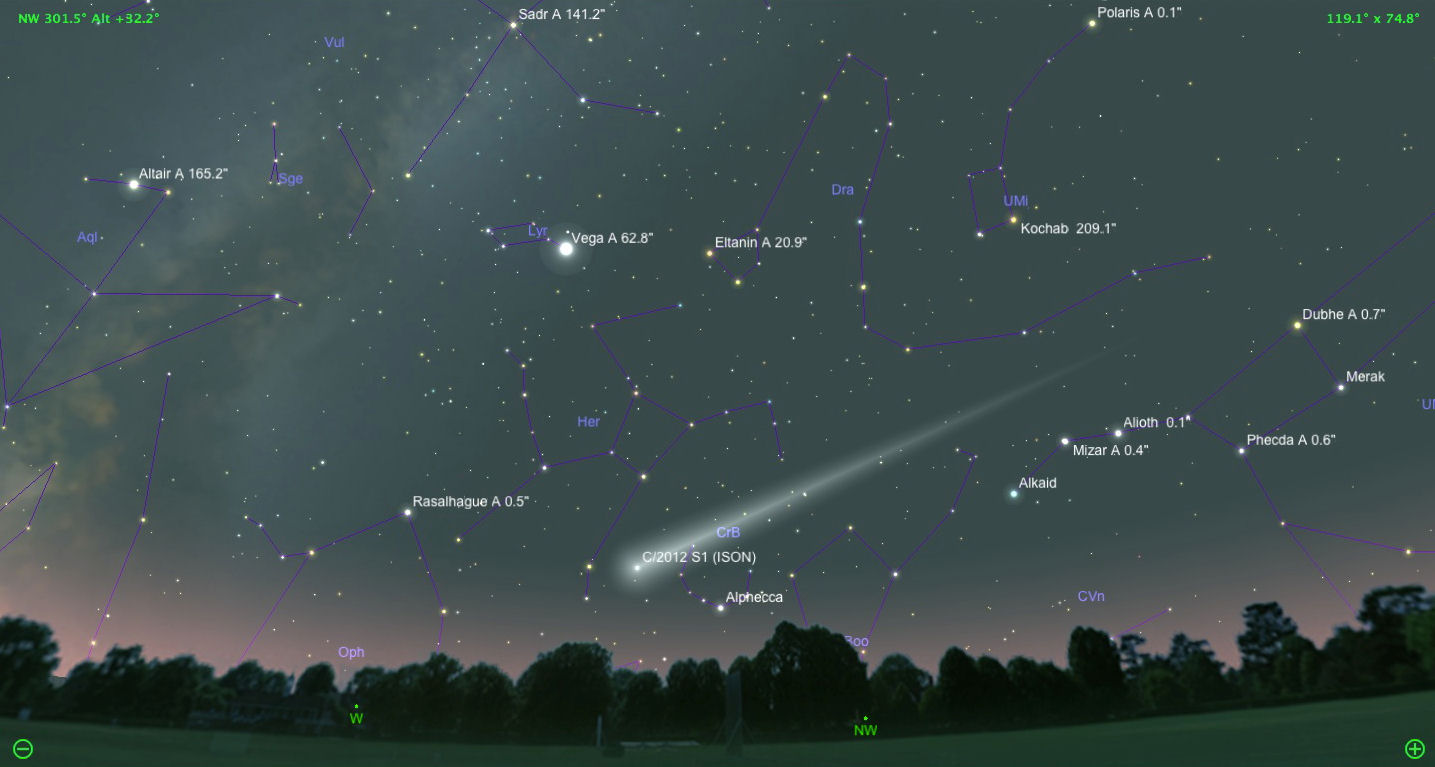Comet C/2012 S1 (ISON) is the most talked about
comet in 2013. It was discovered in late 2012 and was said to have potential of
striking something visible to the eye alone around the time it is closest to
the sun (Perihelion) on November 28, 2013.
In June and July 2013, Comet ISON was behind the sun as seen from Earth,
but when it was recovered in early August, it was not as bright as hoped. What
will happen with Comet ISON in the remaining months of 2013? Comets are
notoriously unpredictable. Many people will be waiting to see if Comet ISON
will be spectacular.

Above is a picture of what we believe Comet ISON will look like in the sky in December 2013. Below is a schedule of the comet as of August 2013.
August 2013
From Earth, Comet ISON was behind the Sun June and
July and its recovery occurred on August 12th, 2013 when amateur astronomer
Bruce Gary of Arizona spotted it. It was bright enough to be seen by observers,
I did not get a chance to go out and see the comet myself.
September 2013
Comet ISON is getting brighter as the months pass
by. September and October astronomers will be able to pick it up pretty well.
The comet will be sweeping in front of the constellation Leo by then. It will
pass, first, near Leo's brightest star Regulus and then near the planet Mars.
Just recently, on October 1st, the comet passed close to Mars.
The Future Months
In November, ISON will come within 800 thousand
miles or 1.2 million Km, of our Sun's surface. This close of a pass by the Sun
may cause the comet to break up and if that happens the comet may break up
completely. If comet ISON does not break up, it will emerge from perihelion
bright enough to see with the naked eye, with a tail. In December,
unfortunately, will be the last month we may be able to see ISON, assuming it
has survived all of the events explained above. It will be visible at sunrise
and sunset and as the distance from the Sun increases, ISON will grow dimmer.
Thank you for reading and I would appreciate if you checked out my social media below! Also on the right-hand side of your screen is a Follow button! If you liked what you read, please share with your friends! If you want to see more, follow my blog so you can be updated when I make a post!

No comments :
Post a Comment